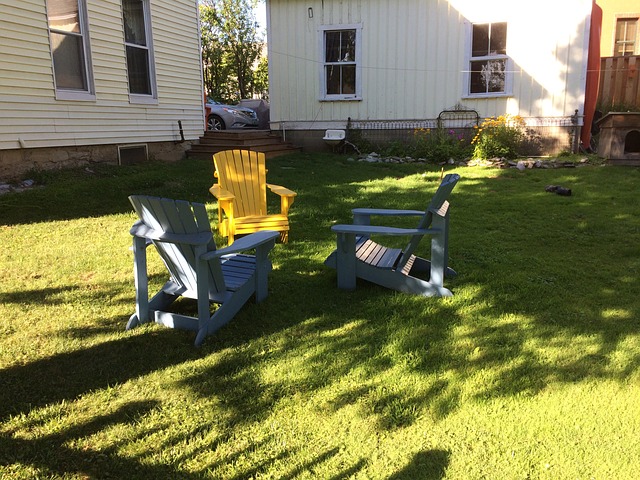Adirondack chairs are a popular choice for outdoor furniture, known for their comfortable design and classic style. They are commonly seen on patios, decks, and by pools. However, one question that many people have is whether Adirondack chairs can withstand exposure to moisture and get wet.
After all, outdoor furniture is often exposed to rain, humidity, and other forms of moisture, and it’s important to know whether Adirondack chairs can hold up in these conditions. In this article, I’ll explore the materials and construction of Adirondack chairs and answer the question: can Adirondack chairs get wet?
Materials and construction of Adirondack chairs
Adirondack chairs are typically made from wood, plastic, or metal. Each material has its own advantages and disadvantages when it comes to water resistance.
Wood is the most traditional material used in the construction of Adirondack chairs. Some of the most common types of wood used include cedar, teak, and pine. Cedar is known for its natural water-resistant properties, making it a popular choice for outdoor furniture. Teak is also a popular choice because it is very durable and naturally resistant to moisture, although it is more expensive than cedar. Pine is a less expensive option, but it requires more maintenance to protect it from moisture.
The construction of Adirondack chairs can also impact their water resistance. Chairs that are well-constructed with tight joints and smooth surfaces are less likely to absorb moisture than those with gaps or rough edges. Additionally, chairs that have been treated with a sealant or waterproof coating will be more resistant to water damage.
Plastic Adirondack chairs are becoming more popular because they are lightweight, durable, and require very little maintenance. They are typically made from high-density polyethylene (HDPE) plastic, which is a waterproof and UV-resistant material. These chairs are easy to clean and can be left outside in the rain without worry.
Metal Adirondack chairs are also available, usually made from aluminum or wrought iron. While metal is naturally resistant to moisture, it can still rust over time if not properly cared for. Chairs made from these materials should be treated with a rust-resistant coating to protect them from the elements.
Overall, the materials and construction of Adirondack chairs play an important role in their water resistance. Choosing the right materials and construction methods can help ensure that your chairs will hold up well in wet environments.
Can Adirondack chairs get wet?
Yes, Adirondack chairs can get wet. However, the extent to which they can withstand moisture depends on their materials and construction.
Wooden Adirondack chairs, in particular, are more susceptible to water damage than plastic or metal chairs. Exposure to moisture can cause the wood to swell, warp, or rot over time. However, choosing a water-resistant wood such as cedar or teak, and treating the chair with a sealant or waterproof coating can help protect it from moisture damage.
Plastic Adirondack chairs are highly resistant to water damage and can be left outside in the rain without worry. Metal chairs can also withstand moisture, but may rust over time if not properly cared for.
In summary, Adirondack chairs can get wet, but their water resistance depends on the materials and construction methods used. It’s important to choose a chair that is suitable for your environment and to take proper care to protect it from moisture damage.
Tips for keeping Adirondack chairs dry
Here are five great tips for keeping your Adirondack chairs dry and maintaining their water resistance:
- Cover your chairs: Use furniture covers to protect your Adirondack chairs from rain and other forms of moisture when they’re not in use. This is particularly important if you live in an area with frequent rain or humidity.
- Store your chairs indoors: If possible, bring your Adirondack chairs inside during rainy seasons or when you’re not using them. This will help prevent them from getting wet and minimize the risk of moisture damage.
- Apply a sealant or waterproof coating: Treat your wooden Adirondack chairs with a sealant or waterproof coating to protect them from moisture damage. This will help seal the wood and prevent it from absorbing water. Be sure to follow the manufacturer’s instructions and reapply the sealant as needed.
- Keep your chairs clean: Regularly clean your Adirondack chairs to prevent dirt, grime, and other debris from accumulating on them. This can help minimize the risk of moisture damage and extend the life of your chairs.
- Use cushions: Consider using cushions on your Adirondack chairs to help protect them from moisture. Cushions can help absorb water and prevent it from seeping into the wood or other materials.
Conclusion
In conclusion, Adirondack chairs can get wet, but their ability to withstand moisture depends on their materials and construction. Wooden chairs, in particular, are more susceptible to water damage than plastic or metal chairs. However, by choosing the right materials, construction methods, and taking proper care, you can help protect your Adirondack chairs from moisture damage and maintain their water resistance over time.
Remember to cover your chairs, store them indoors during rainy seasons, apply a sealant or waterproof coating, keep them clean, and consider using cushions to protect them from moisture. These tips will help extend the life of your Adirondack chairs and keep them looking great for years to come.
You might also be interested to know if Wicker chairs can get wet.









